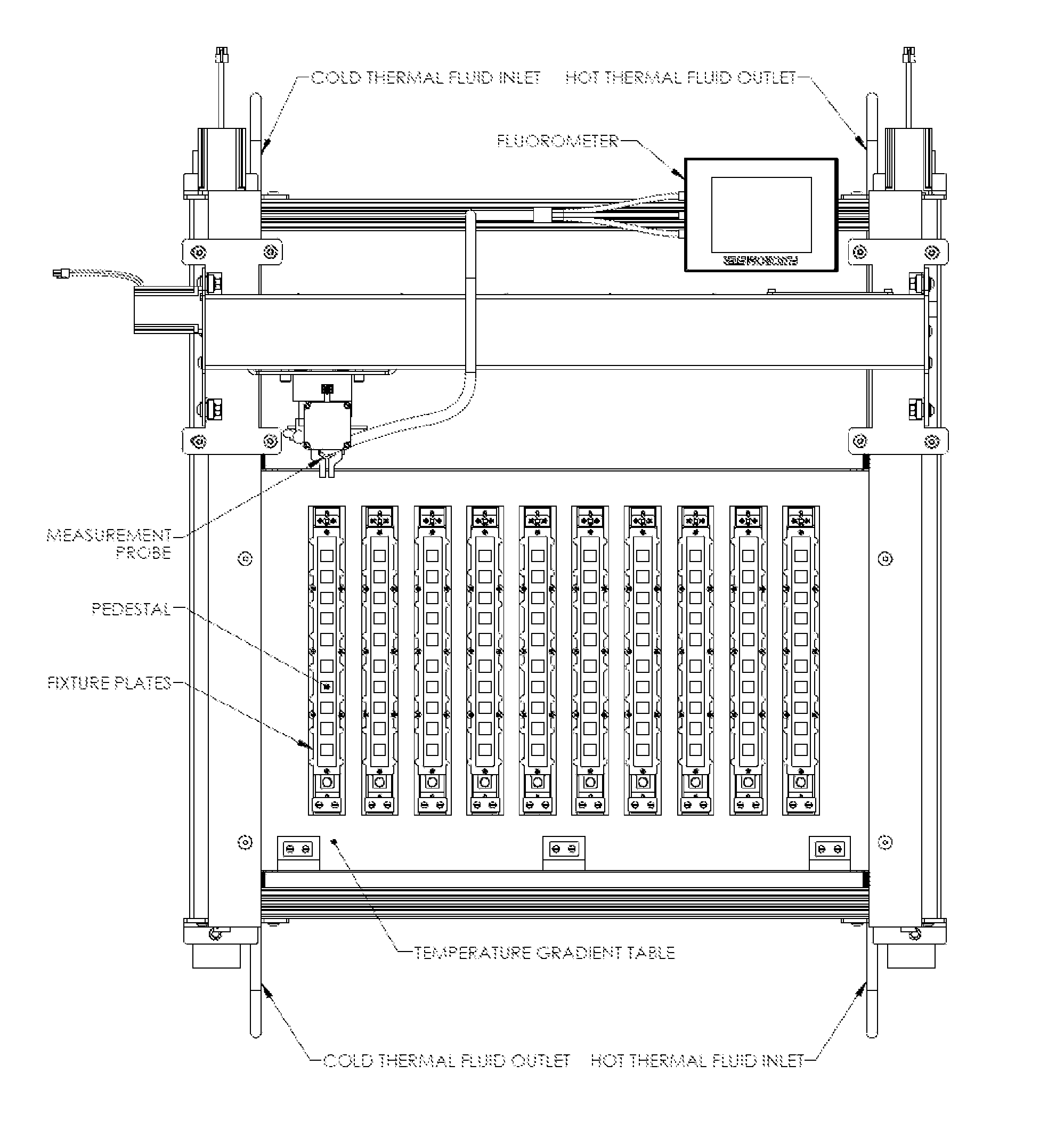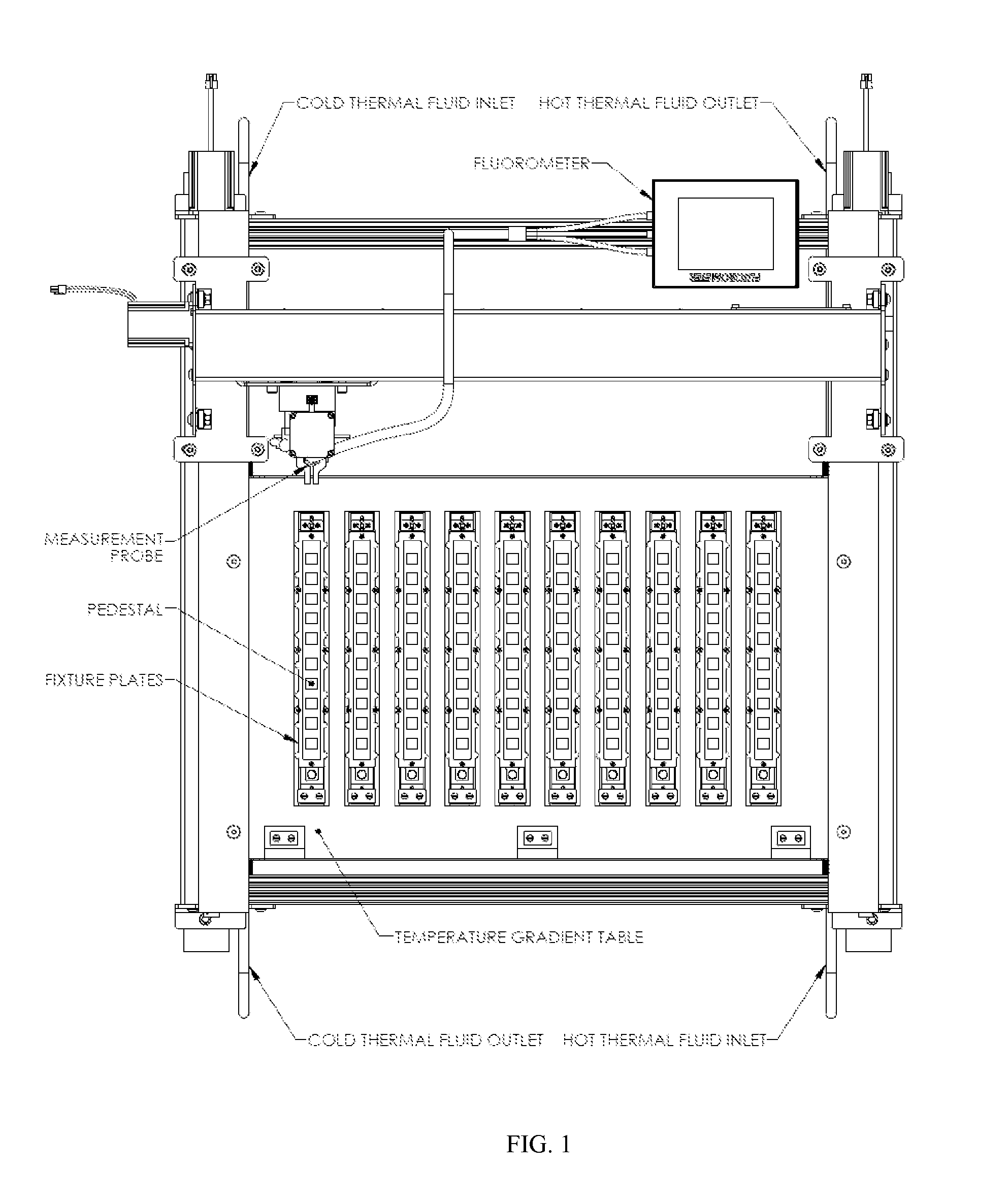Optimum plant canopy temperature
a technology of optimal plant canopy temperature and temperature, applied in the direction of material analysis, optical radiation measurement, instruments, etc., can solve the problems of limited biochemical methods of determining optimal plant canopy temperature, and achieve the effect of increasing the precision and repeatability of results
- Summary
- Abstract
- Description
- Claims
- Application Information
AI Technical Summary
Benefits of technology
Problems solved by technology
Method used
Image
Examples
example 1
Preparation of the Temperature Gradient Table
[0324]One embodiment of the Temperature Gradient Table comprises a two foot by 3 foot plate of aluminum. A water substitute of ethylene glycol is used but any number of thermal fluids and even water will work well for this type of a setup. A water bath was set at one end of the table, with in and out connectors and tubes attached so that the water from the bath circulated through the column drilled at one end of the table, then back through to the water bath. The other side of the table was fitted with a second water bath. This second water bath contained water that was set at a higher temperature circulating through the other drilled column on the table. This created a temperature gradient over the length of the table. For each separate experimental run, the gradient system was allowed to acclimate for at least 30 minutes prior to placement of the samples on the gradient table. Gradient table temperatures were monitored during the experi...
example 2
Preparation of Leaf Samples of the Rice Cultivars
[0325]The experiment described in the following examples was a blind analysis of 24 different rice cultivars growing in an outdoor test area. Rice breeders grew the various cultivars in 24 individual test plots. The rice breeders provided the samples of plant material from the rice cultivars to the inventors at the testing location without any indication of the rice cultivar name, its relative growth temperature optimum, or any other identifying information.
[0326]Plant material from the 24 above-mentioned cultivars in the research plot were collected over June and July of 2010. Several rice plants from a specific plot were removed from the soil in the afternoon and packaged for overnight transport to the laboratory using the following procedure. Approximately six plants were collected with a small amount of soil left on the roots. These plants were placed in a plastic bag along with a water-soaked piece of filter paper measuring about...
example 3
[0329]Exposing the Plant Leaf Samples with Light Prior to the Fluorescence Measurement
[0330]The leaf samples placed on the temperature gradient plate were then treated to a 15 minute “light charging” period (also termed “light soak” or “light adaption”) in preparation for the subsequent Chlorophyll a fluorescence testing. The light source was photosynthetic light emitting 340 micromoles m−2 sec−1. Six 4-foot long fluorescence light tubes were placed six inches above the temperature gradient plate containing the prepared leaf samples. At the end of the fifteen-minute period of light exposure the light exposure was measured, the light was turned off and the remainder of the test was performed in the dark.
PUM
| Property | Measurement | Unit |
|---|---|---|
| temperature | aaaaa | aaaaa |
| specific time intervals | aaaaa | aaaaa |
| temperatures | aaaaa | aaaaa |
Abstract
Description
Claims
Application Information
 Login to View More
Login to View More - R&D
- Intellectual Property
- Life Sciences
- Materials
- Tech Scout
- Unparalleled Data Quality
- Higher Quality Content
- 60% Fewer Hallucinations
Browse by: Latest US Patents, China's latest patents, Technical Efficacy Thesaurus, Application Domain, Technology Topic, Popular Technical Reports.
© 2025 PatSnap. All rights reserved.Legal|Privacy policy|Modern Slavery Act Transparency Statement|Sitemap|About US| Contact US: help@patsnap.com



